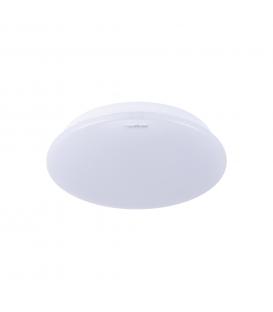Power Factor Correction (PFC) function

Power Factor Correction (PFC) is a critical function in LED drivers and many other power electronics applications. Its primary purpose is to improve the power factor of the load, which in turn enhances the efficiency of the power supply and reduces harmonic distortion in the electrical system. Here's a detailed explanation of PFC and its application in LED drivers:
What is Power Factor (PF)? Power Factor is a measure of how efficiently electrical power is converted into useful work output. It is the ratio of real power (in watts) to apparent power (in volt-amperes). A power factor of 1 (or 100%) indicates perfect efficiency, where all the power is used for useful work. A power factor less than 1 indicates inefficiency due to reactive power.
Why is Power Factor Correction (PFC) Necessary? In many electrical systems, especially those with non-linear loads like LEDs, the power factor is less than 1, often significantly less. This happens because these loads draw current in a way that is not in phase with the voltage, leading to wasted power and increased line current. Low power factors can result in:
- Increased energy costs for consumers due to higher apparent power (kVA) requirements.
- Overloading of electrical distribution systems.
- Increased voltage drop and reduced power quality.
How does PFC Work in LED Drivers? In LED drivers, PFC is achieved using active or passive methods:
Active PFC: Active PFC uses electronic circuits to actively shape the input current waveform to be in phase with the voltage waveform, thus increasing the power factor. This is typically done using power electronics components like boost converters and control algorithms.
Passive PFC: Passive PFC achieves power factor correction using passive components like capacitors and inductors. While less efficient and less common in LED drivers, it can still improve power factor.
Benefits of PFC in LED Drivers: PFC in LED drivers offers several advantages:
- Improved Efficiency: Higher power factor means that less power is wasted, leading to more efficient energy conversion.
- Compliance with Regulations: Many countries have regulations in place that require a minimum power factor for electronic devices. PFC helps LED drivers comply with these regulations.
- Reduced Harmonic Distortion: PFC reduces harmonic distortion in the electrical system, which can otherwise disrupt other sensitive equipment and cause overheating of wiring and transformers.
- Stable LED Performance: PFC helps maintain a stable voltage supply to the LEDs, ensuring consistent brightness and color temperature.
Applications of PFC in LED Lighting: LED lighting, particularly in commercial and industrial settings, often requires PFC to meet regulatory requirements and ensure efficient operation. This includes applications such as:
- Street Lighting: PFC is essential in street lighting to reduce power losses and ensure reliable operation.
- Industrial Lighting: PFC is critical in industrial lighting installations where large numbers of LED fixtures are used.
- Commercial Buildings: LED lighting in offices, malls, and other commercial spaces benefits from PFC to reduce electricity consumption and maintain a stable power supply.
In summary, Power Factor Correction (PFC) is an important function in LED drivers, as it improves efficiency, reduces harmonic distortion, and ensures compliance with regulations. PFC is especially relevant in situations where large numbers of LEDs are used, such as in commercial and industrial lighting applications.






